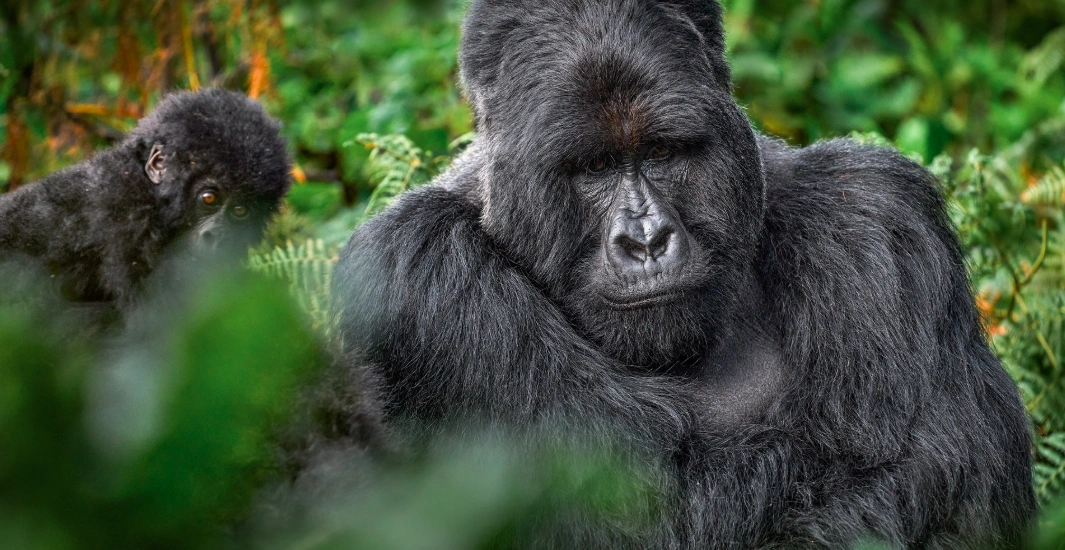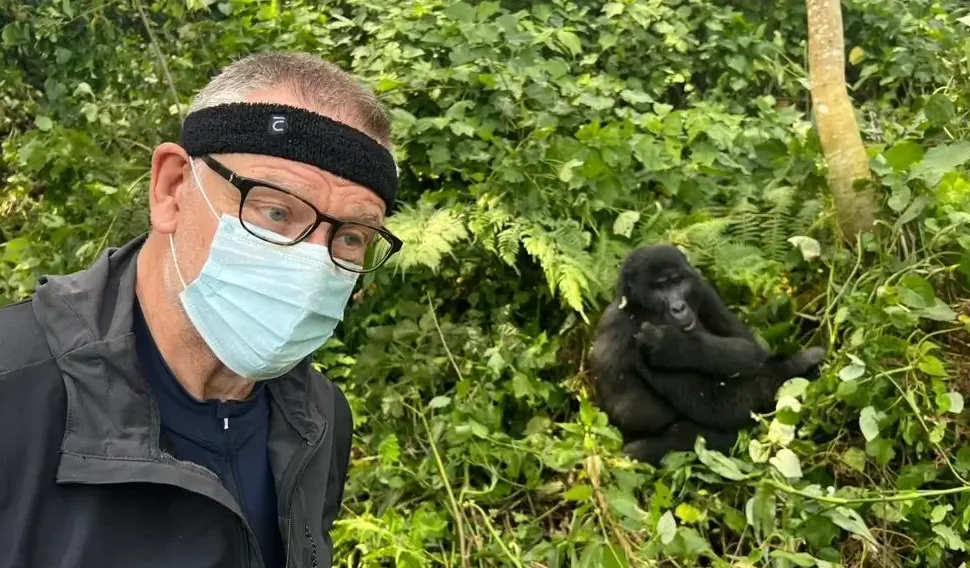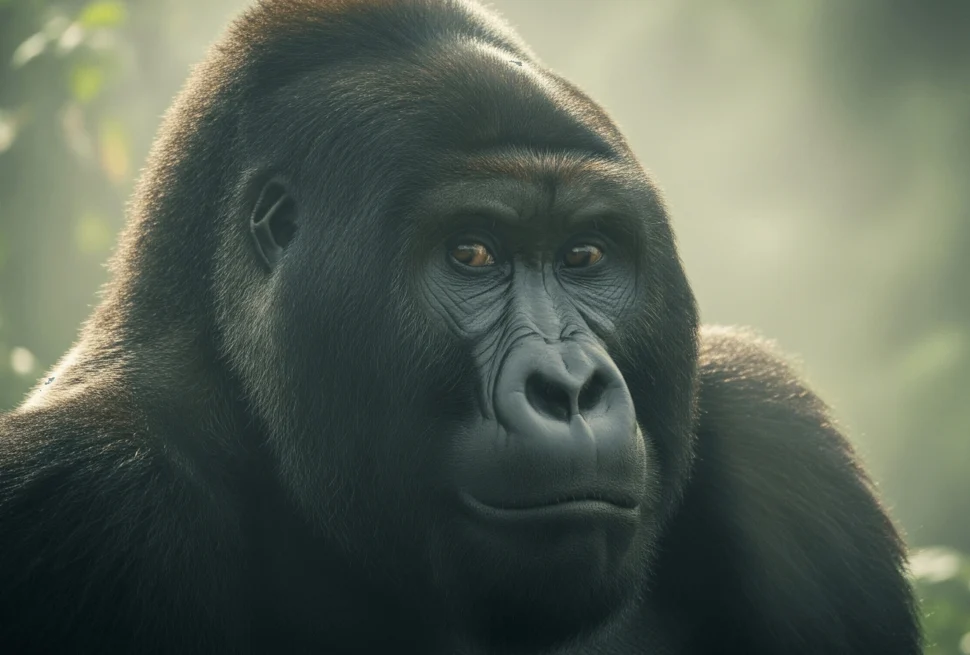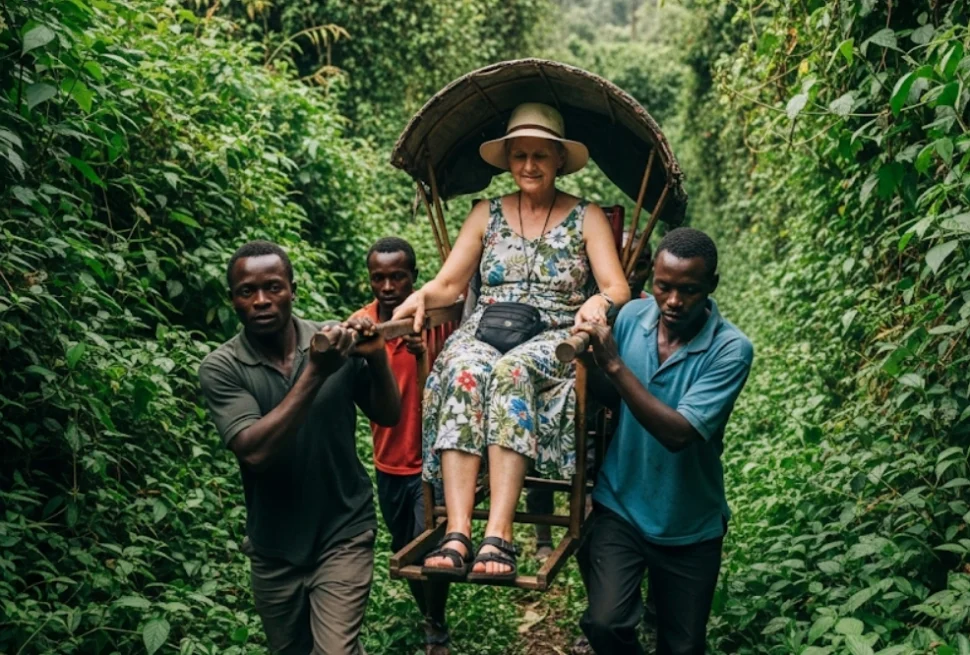“The more you learn about the dignity of the gorilla, the more you want to avoid people.”
– Dian Fossey
Gorilla trekking in Uganda isn’t just a bucket list item. It’s an emotional, physical, and sensory journey into one of the most biologically intense corners of Africa.
The moment you step into the forest—whether in Bwindi Impenetrable National Park or Mgahinga Gorilla National Park—the outside world fades. In its place: birdsong, mist, and anticipation.
But what’s the actual trek like? How long does it take? What do you do once you find the gorillas? Let’s walk through it.
Trekking Through Uganda’s Ancient Rainforests
You’ll begin your day early. After a safety briefing and a review of the gorilla trekking rules, you’ll be assigned a gorilla family group to track (more on that shortly).
Then, with your guide, tracker, and perhaps a porter, you’ll head off—on foot—into one of the most ecologically rich habitats on Earth.
The trek itself is unpredictable. Some treks last just an hour; others can stretch to six or more.
This depends largely on the movement of the gorilla family you’re tracking, which is why choosing the best time of year for gorilla trekking can make a real difference in trail conditions.
Expect steep slopes, tangled vines, mud, and moments of scrambling. Good boots and rain protection matter here—so take packing seriously (our guide on what to pack for gorilla trekking in Uganda will help).

Group Assignments: How Gorilla Families Are Selected
Before the trek begins, travelers are sorted into groups of 8 people maximum, each assigned to a specific gorilla family. Park rangers consider your fitness level and preferences when doing this.
If you prefer a shorter hike, let them know early. Older trekkers or those with limited mobility may be matched with families known to be closer that day.
This assignment also depends on the region you’ve chosen to trek in. Bwindi alone has four tracking sectors—Buhoma, Ruhija, Rushaga, and Nkuringo—each with multiple habituated gorilla families.
Choosing where to see gorillas in Uganda plays a big role in what kind of experience you’ll have.
How Long Does the Trek Take?
It’s impossible to predict exactly. The trek to reach your assigned gorilla family can last anywhere from 1 to 6 hours, one way.
Once contact is made, your guide will signal for a pause—you’ll sanitize, lower your voices, and approach slowly for your one-hour encounter.
That 60-minute window is strictly enforced to minimize stress on the gorillas. But trust us—it’s more than enough to feel the power of the moment.
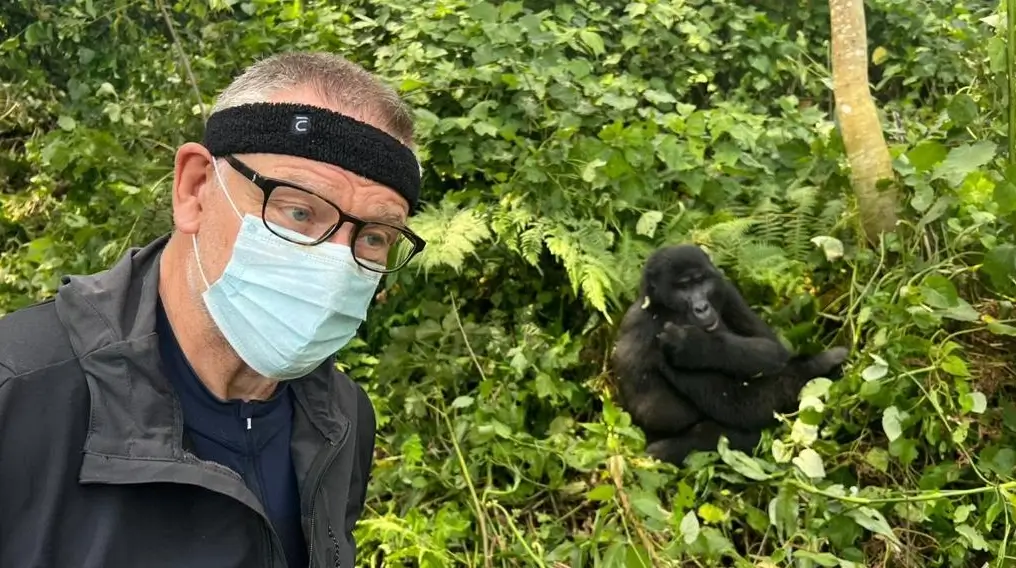
Time Spent with the Gorillas
The moment you see them—chewing bamboo, playing with their young, staring back at you with quiet intelligence—it’s electric. This isn’t a zoo. This is their world, and you’re a guest.
You’ll have one hour to observe. Your guide will help position you at a respectful distance (usually 7 meters), but curious juveniles sometimes get closer on their own.
You’re not allowed to touch or approach, even if a gorilla comes near. That’s for your safety and theirs.
This hour passes quickly. Some people snap away with their cameras. Others just stand still, soaking it in. Both are valid. Just be present.
Photography and Behavior Guidelines
When the gorillas are in view, most visitors instinctively reach for their cameras. That’s understandable. But a few ground rules help protect both you and them:
- No flash photography: It startles the gorillas and may agitate them.
- Stay low and quiet: Sudden movements can be interpreted as threats.
- Use a silent shutter if possible: Especially during intimate moments like grooming or nursing.
- Don’t point directly at them: Use body language that’s non-confrontational—kneel or sit if necessary.
If you’re serious about getting great photos, a good zoom lens is your friend. But honestly, some of the most memorable moments aren’t the ones captured—they’re the ones that live only in your memory.
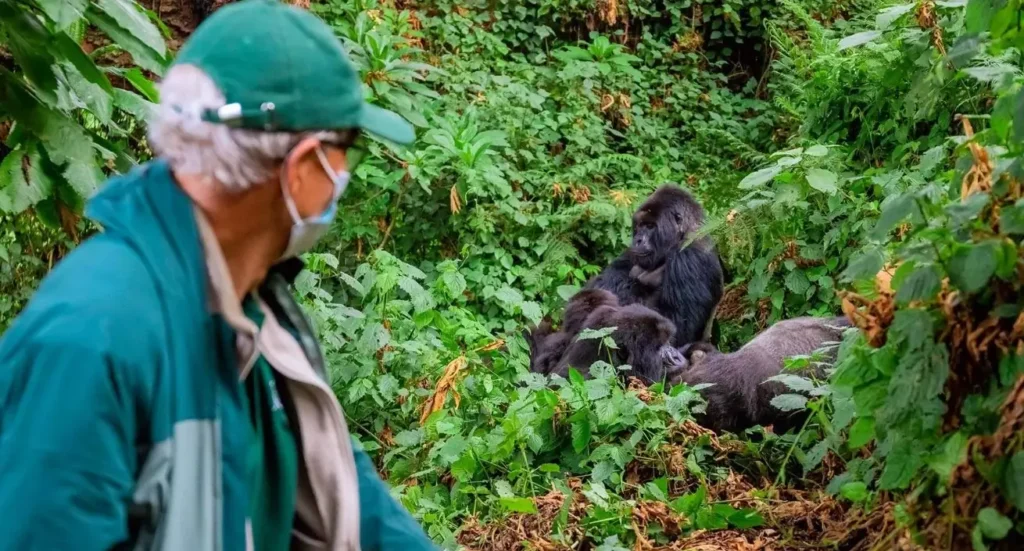
The Emotional and Sensory Experience
So what’s it really like? Honestly, hard to describe.
The forest is alive. You’re surrounded by the scent of damp earth and the sharp tang of wild ginger. Birds shriek. Leaves rustle underfoot. Then everything goes quiet—and you see them.
It’s humbling. A silverback the size of a small car calmly munching on stems. A baby peeking curiously from behind its mother’s arms. The stillness is sacred. Some people cry. Others just stare in awe.
This isn’t a thrill-seeking safari—it’s a soul-stirring, perspective-shifting moment that many call the highlight of their lives.
Planning Your Gorilla Trek in Uganda?
Whether you’re trekking in Bwindi or Mgahinga, understanding the full scope of the experience is essential. For a complete planning resource—including permits, prices, rules, and what to expect—visit our Gorilla Trekking in Uganda page.
Final Tip
Wear layered clothing, bring a small daypack, and mentally prepare for a hike. But also—prepare to be moved. Gorilla trekking is more than wildlife tourism.
It’s an emotional encounter with one of our closest relatives, in their natural home, on their terms.

